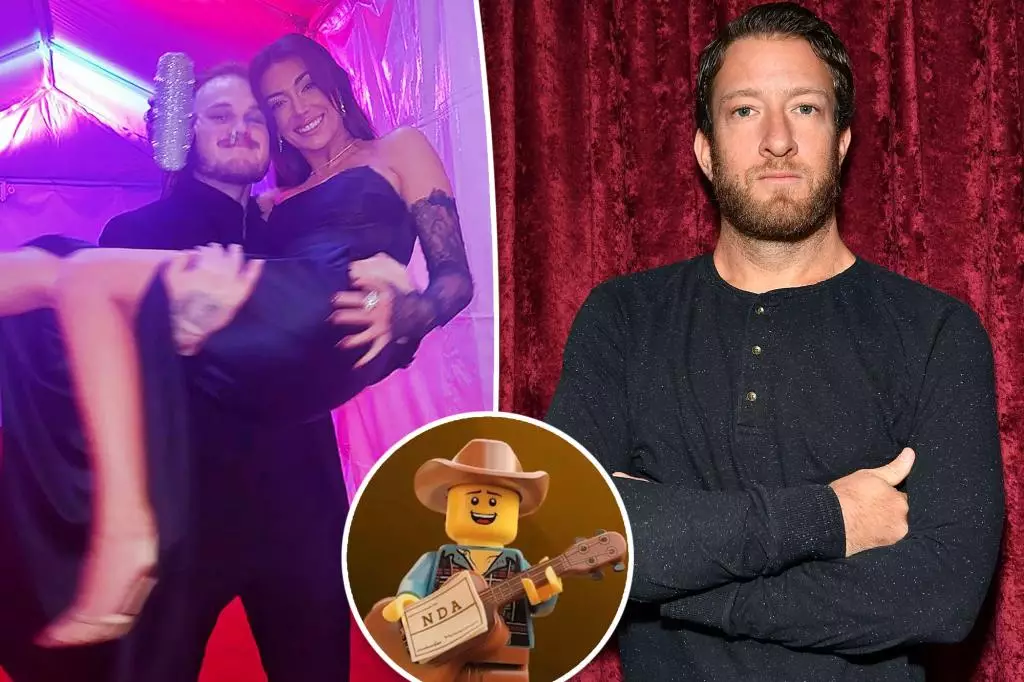The contemporary cultural landscape seems to have a never-ending appetite for celebrity feuds and controversial narratives. Recently, the spotlight has intensified on Barstool Sports founder Dave Portnoy, who has once again stepped into the limelight with a diss track aimed squarely at country singer Zach Bryan, ex-boyfriend of Brianna “Chickenfry” LaPaglia. The latest release showcases not only Portnoy’s penchant for lyrical jabs but also the complexities of relationship dynamics and the often murky waters of fame.
At its core, this drama is the aftermath of a breakup between LaPaglia and Bryan, which has devolved into a public spat. Portnoy has gained notoriety for his aggressive and often outrageous commentary, and his choice to escalate the tension through music highlights a broader trend where public figures use art as a means to settle personal disputes. The provocative nature of Portnoy’s latest track—reminiscent of classic battle rap—strikingly reinterprets Bryan’s controversies through a creative lens that mirrors a larger societal fascination with scandal.
The song, aptly titled “Country Diddy,” cleverly borrows from the popular culture surrounding Sean “Diddy” Combs, who is currently embroiled in legal issues related to sex trafficking and racketeering. With the lyrics painting a rather unflattering picture of Bryan, Portnoy’s words serve as both an indictment of the country star’s alleged behavior and an exploration of moral hypocrisy often seen in celebrity culture.
In the diss track, Portnoy isn’t merely critiquing Bryan’s reputation; he heavily insinuates that Bryan is using legal intimidation tactics. Lyrics like “Someone tell your cheap lawyers I don’t give a f—k” suggest not only a challenge to Bryan’s implicit threats but also a confidence in the public’s perception of the situation. Moreover, Portnoy’s accusation that the Grammy-winner attempted to silence LaPaglia by offering her a hefty sum of money introduces critical conversations about power dynamics in both relationships and the entertainment industry.
LaPaglia’s subsequent remarks, referring to the track as “lethal,” further illuminate the personal stakes involved. Whether or not Portnoy’s choice to go public with such incendiary lyrics is noble or misguided remains a matter of perspective, but it certainly portrays the emotional turbulence stemming from the breakup and how intertwined these relationships can be in the age of social media.
The Visual Narrative
Beyond the lyrics, the accompanying music video expands the original statements into a broader commentary. The visual choice of a Lego figure, representing Bryan, whimsically juxtaposes the gravitas of the accusations with a light-hearted representation, illustrating another layer of sarcasm in Portnoy’s critique. The image of the figure holding an NDA in front of a bank becomes a powerful symbol of the trade-offs and moral dilemmas that accompany celebrity status.
This facet of Portnoy’s work reflects an increasing trend in modern multimedia storytelling, where imagery and sound combine to create complex narratives that can provoke thought and retain entertainment value simultaneously.
The ongoing rivalry has ignited reactions not just among fans but also within the industry itself, signaling a profound impact on the music and celebrity landscape. LaPaglia’s assertion that Bryan compensated former partners to hide their stories stands as an indictment on accountability within the music business. The unfolding drama suggests a culture of silence that is beginning to shift as stories emerge from the shadows, forcing public figures like Bryan to confront past actions openly.
Portnoy’s remarks on threats, both legal and personal, bring to light a discussion about the ethics of utilizing one’s platform to voice dissatisfaction and shed light on toxic relationships. The public’s response hints at an appetite for sincerity in a world often marked by deception and veiled intentions.
The diss track culture exemplified by this latest installment of Portnoy’s work not only entertains but also serves as a cultural critique of modern celebrity behavior and the machinations of personal conflict. It reveals a space where art, emotions, and public perceptions intertwine, compelling audiences to reflect on the realities behind the spectacle. As the drama unfolds, it may catalyze a broader shift in how celebrities handle disputes, encouraging transparency over obfuscation, a movement that could fundamentally reshape public discourse around fame and accountability.

Leave a Reply